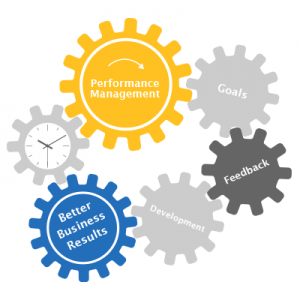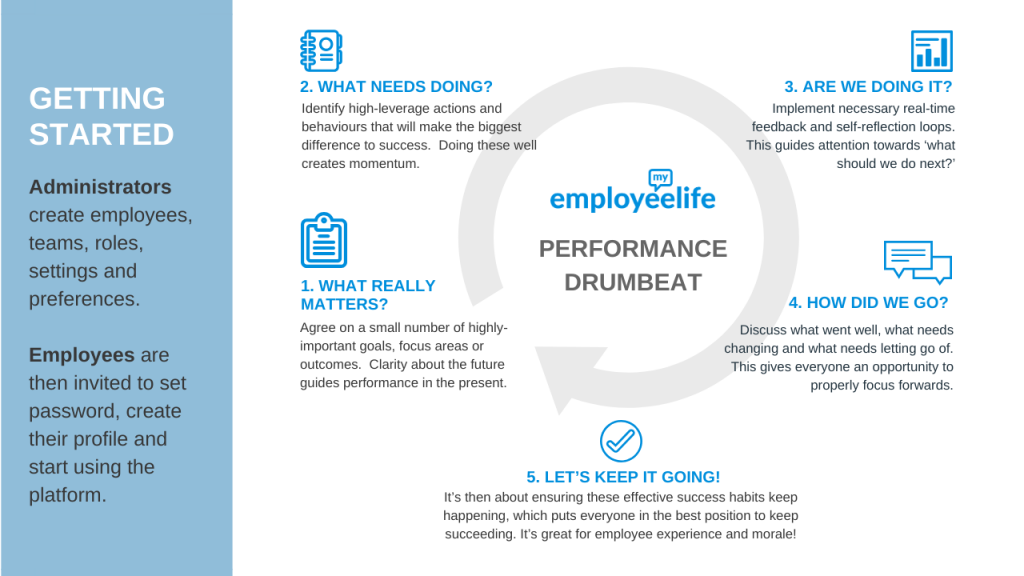
What if performance reviews were never invented?
Let’s pretend for a moment that we are leaders in an organisation, and we’re keen to find ways to improve employee performance. Let’s also pretend that performance reviews and evaluations haven’t yet been invented. What should we do?
Let’s start with the basics. In simple terms, a job/role is an exchange between a person (employee) and an organisation (employer). It is a legal relationship that comes with certain legal responsibilities that can’t be ignored. In addition to these minimum requirements, we also know that our job as leaders is to maximise the performance of the entire organisation. The more fair and valuable exchanges that we can create right across the workplace, the better off we will be.
Let’s assume we have a typical structure that includes managers and team members. What are our options?
Option 1: Supervisors review and evaluate employee performance
I know, performance reviews haven’t been invented yet, but this is a logical place to start. The idea is that we identify people with superior skills and experience to others and make them responsible for managing and judging the performance of less knowledgeable team members. Because they (surely) know the difference between good and poor performance, they are in a great position to judge performance in a fair and equitable way. To make it fair for everyone, these performance evaluations can be done at the same time.
Initially, this seems like a good idea, however, there are a few questions that start to appear. What if performance is below an acceptable standard? Wouldn’t we want this addressed when first identified rather than waiting for a point in the future? If performance isn’t addressed in real-time, isn’t it a missed opportunity for the organisation? Is it fair for an employee to receive a poor rating about things they could have changed if they had known earlier?
In fact the more we think about it, the more we realise that a performance evaluation is actually an evaluation of the supervisor! We don’t want supervisors acting like judges, we want supervisors helping their team members to succeed. If someone is failing, we would want supervisors to feel at least partly responsible for fixing this. We decide to investigate other approaches.
Option 2: Employees get continuous feedback in real-time
To overcome the problem of employees not getting feedback in real-time, we decide to consider an approach that we call continuous feedback. This approach still assumes that our supervisors have superior skills and knowledge than their team members, and as such are in a great position to give instant feedback about what’s going well and what needs improving. Now we are getting somewhere!
This approach could work if our supervisors had the necessary skills and experience to give the appropriate feedback. We could always do this through training.
However, we once again identify a few problems. Do we really want our supervisors giving a continuous barrage of one-way feedback to our employees? Didn’t we read somewhere that people learn by doing, and mistakes are part of the learning process? If we have supervisors giving continuous feedback, what impact will this have on morale and employee experience? Are we creating an environment where people will just come to expect instant praise or reprimands during the day? Are we strengthening or weakening our organisation?
As we start to work through the possible secondary and tertiary consequences of this approach, all of a sudden it seems less appealing. We keep searching for an approach.
Option 3: We adopt an organisational ‘growth mindset’.
Being avid readers and curious about trends and topics that are becoming popular and showing signs of success, we stumble across the work of Carol Dweck and ‘growth mindset’ (type it into google and check it out for yourself). In particular, we discover that Microsoft has recently come out and attributed their recent run of success to adopting an organisational ‘growth mindset’. The idea that employees who approach problems as challenges ‘on the way’ to success are more likely to succeed than people who see challenges as ‘in the way’ is instantly interesting. We are starting to realise that options 1 and 2 above might accidentally foster a fixed mindset. We agree that it makes no sense to implement any approach that isn’t going to keep raising the standards of the entire organisation.
We start to think to ourselves…imagine if we had an entire workforce learning to overcome new challenges and solve new problems. It would mean that we would make a few more mistakes, but it would put less stress on managers to have to know everything and be constantly micro-managing performance. If we got it right, we could be fostering a culture that can adapt to new circumstances which in a VUCA world is highly appealing. Our managers could be guiding performance instead of managing performance. We could draw attention away from judgement, reviews and ratings (demotivating), and focus more on creating an environment where people get stuck in, get the work done, and adjust in real-time. If we could do this properly, this would certainly give us an opportunity to maximise the value of the employment exchange for the benefit of everyone. It could certainly lead to improved performance without having to implement a performance review system.
Whilst we still might have something called a review, it would be more about bringing one period of time to a close and setting a course for the next period of time. We agree that it’s worth considering.
So, which option should we go with?
Let’s agree that in such a short article, each of the above scenarios barely touches on the vast number of factors and nuances that need proper consideration. However, what we know is that as business leaders, the decisions we make have an impact on the way people go about doing their jobs. With everything covered in this article in mind, which strategy is likely to improve our chances of improving performance and achieving long-term goals?
- Focus attention on evaluating, reviewing and judging performance after the fact.
- Focus attention on evaluating, reviewing and judging performance in real-time.
- Focus attention on self-reflection, guiding performance and a growth mindset that strengthens the chances of future performance.
If we wanted to choose option 1 or 2, there are plenty of providers and vendors out there at various price points that can provide us with a software solution. But is this really going to achieve our original goal of improving performance?
If option 3 sounds appealing, then My Employee Life should be on the shortlist to consider. Why? This option is actually less about software and more about making the necessary decisions about the type of environment that needs to be created. With this approach, we wouldn’t need the majority of features that most performance review software provide, we would need to focus on driving more personal conversations and having the necessary success habits in place.
There’s plenty of research to support the idea that people who are consistently in their challenge zone are more motivated, and that is what a growth mindset is all about. It sounds like a sensible idea to consider.
The good news is that we can help you figure out whether this is a viable strategy for your workplace. Contact us for more information.






